Big climax to SHOWBOAT shoot (actress Carolyn Zaremba works with future/famous Hollywood scriptwriters to give some grit/"riot" to the movie!
SEE SHOWBOAT 1988 (trailer/movie FREE); https://filmfreeway.com/projects/2997662
(Stories excerpted from my book,“12 DEAD FROGS and Other Stories—A Filmmaker’s Memoir,” & also “Sleeper trilogy––Three UNDISCOVERED First Features by Rick Schmidt 1973-1983”)
As I viewed Ed Nylund through the eyepiece of my Eclair NPR 16MM camera, watching him being interviewed in the first few minutes for SHOWBOAT 1988 at California Hall, my ears picked up some unfamiliar sounds in close proximity. After I completed the shot I looked up, to see people rustling around tables, moving chairs, placing boxes on the floor, laughing and chattering, the audition hall filling up and coming alive. I couldn’t have yet realized that the floodgate had opened, that before the end of the third night we would be visited by three TV crews, and over 1000 people.
Linda Montano, Performance Artist.
If you remember reading in Substack about me trying to be responsible when shooting Ed Nylund during his great performance art piece at Diablo College (see DIABLO VALLEY BUST), worrying that I might ruin his footage if I jiggled the camera during twenty minutes of hand held camerawork, how do you think I felt as I filmed act after act that hit the stage for three nights? It was very intense shooting hour upon hour, covering the 4-minute acts, worrying that I alone was responsible for their moment recorded for posterity. The first night of the audition I saw everything from a man in a robe dancing with a blow-up dummy (the first act!), to a guy who said he was doing a "Martian imitation of an American Freeway at Rush Hour.”
By the third night all categories of performers had descended. There were snake charmers, jugglers, singers, children acts, jazz acts, dancing acts, mimes, several Elvis impersonators, and people who just got carried away watching from the audience and decided to take up the dare and express themselves. Famous San Francisco personalities like rock star Sylvester and a guy named Jesus Christ Satan (who later got arrested for carrying a bucket of gasoline into a church) showed up. It was a three-ring circus, the last hurrah of hippie enthusiasm, the dream of flower-power doing its last, spriggy dance before its mid-1970’s swan song.
Jeff Wizig
SCRIPTWRITER’S ACT (1975)
As the audition progressed, the writers continued to grumble, keeping me informed during the exhaustive shoot that I wasn’t covering their scripted material. Well, since I felt that my main concern was recording each auditioner’s act, those fleeting moments of human expression, I couldn’t really focus on their concerns. Keep in mind that the writers I appeared to be ignoring were soon to make names for themselves, doing what they were trying to do for me for a mere $250 each. Nick Kazan (writer of At Close Range, Reversal of Fortune, Patty Hearst, Dream Lover, Matilda, Henry Bean (writer and producer of Internal Affairs, The Believer, also Pen nominee for his novel False Moves, etc.), and Bill Farley (writer/director of Citizen, Of Men And Angels, I Wanted To Be A Man With A Gun, etc.), refused to take no for an answer. But at the time I really couldn’t have done coverage of both the audition and the scripted material, even if it had been written by god herself! There just wasn’t either the opportunity, or the energy. But that didn’t stop them. They had their act, their “scriptwriter’s act,” and demanded their four minutes of stage-time just like everyone else.
City Magazine (San Francico) got our press release and publicized SHOWBOAT 1988.
Farley came up to me at the camera around 12:30 AM, actually into the next day after the last night of the audition (July 25, 1975) and told me I’d better have a full magazine of film because “something big was going to happen.” When I asked him What, he wouldn’t tell me. When I exclaimed that in that case I wouldn’t shoot it, he said, “It’s your funeral,” and walked away.
Moments later, after I had changed to a full magazine (of course I got ready, with 11 minutes- worth of filmstock!), the audition was suddenly interrupted by actress Carolyn Zaremba, who burst onto the stage from the wings. I quickly zoomed in tight on her face, focused, and zoomed out as she pointed a long finger at me––I felt it right through the lens!––yelling that I, posing as cameraman, was really the director, ripping everyone off, that Ed Nylund (whom everyone had seen acting as the director) was just an actor, my actor. She ranted and raved for quite a few minutes, saying, among other things, how I was going to make a lot of money off the auditioners. Given the fact that this was happening after three nights of continuous shooting, I was pretty exhausted and in partial shock.
Lead Actress Carolyn Zaremba
The writers had outlined this elaborate scene with Carolyn’s help, and then helped time her spectacular entrance. She acted with an improv ferocity, delivering important issues to the content of the Showboat audition process (imagine the crowds in line for American Idol, America’s Got Talent, or The Voice, and their determining who owns their images and audio). In any case, she made it super-real for me and the audience. Carolyn had been frustrated waiting to perform as the film’s Lead Actress,” and had funneled her energy into a tour-de- force performance, which became crucial to cutting an ending to the audition and feature film itself.
In the middle of this ruckus, actor Dick Richardson mounted the stage and defended me, saying, “If there’s money made you’ll make it too, not just us.” Ed joined Dick and tried to explain how the audition had allowed everyone the chance “to reveal the poetry in their soul.”
Lead Actor Ed Nylund
But the audience was simply not that interested in what anyone had to say. Consisting mainly of the twenty or so acts left in the hall at that late hour (after 1:00AM by now…) who still wanted to perform, they seemed mainly mad that the “Riot Act” (Z yelling at me, etc.), had used up more than its allotted four minutes!
FAMOUS FOR 15 MINUTES (1975)
In a sense, the auditions collapsed in on themselves. Still, the camera, just like Old Man River, had kept “rolling along,” recording each and every act that appeared on stage. Art patron and friend Jim Newman (founder of the famous San Francisco Dilexi Gallery in San Francisco) had come to the rescue as an investor on the last night, supplying me the extra $1,200 I needed for filmstock and salaries (two people loaded film magazines that last evening, just to keep my camera full of 400’ rolls). (THANKS AGAIN JIM!!). That’s how close the audition shoot had came to becoming a failure. I certainly felt fortunate to have survived the ordeal.
Raymond Harvey
Many of my friends knew more about how the auditions looked recorded on film or video than I did, having seen footage of the crazier acts broadcast on local NBC TV. Our spot was repeated at the noon, 6PM and 11PM slots throughout that last day of the event (July 24, 1975), causing the huge increase in attendance. Cable TV stations had also covered the audition (I later got their footage and incorporated some of it into the finished cut). So I had become slightly famous (in my friends’ eyes at least) during my exhaustive filming sessions. But that quirk of the production was little more than a tickle in my side. After all, I had made myself a “living legend” once already, before I had ever graduated from college (See “Living Legend” section, in my memoir, Twelve Dead Frogs.
————
When I watched all the gorgeous B&W footage with my daughter Heather (then age eight) sitting by my side at Palmer Lab screening room over several evenings, I felt like I had a pretty incredible document on my hands. And that gave me confidence to put myself through the next meat-grinder for my art.
GIVING IT ALL AWAY (1975)
Because I was out of money again I did what I had done after completing A Man, A Woman, And A Killer feature and took off for New York. Writer Jon Carroll (a founding writer of Rolling Stone magazine) had written an article about the Showboat 1988 audition that had appeared in the Village Voice, and when he heard I was heading to the big apple, he suggested I look up a friend of his, Michael O’Donahue, another writer who was now part of a new TV show called Saturday Night Live. So I brought along a double-system Palmer’s projector (to project picture and sound track in sync), checking it in with my luggage for the flight.
When I got to NY I lugged that heavy projector over to Rockefeller Center, and arrived as scheduled on the fourteenth floor, to show a trailer-type cut to a group of deceptively plain-looking people named John Belushi, Chevy Chase, Al Franken, Gilda Radner, others who would become very famous in the coming weeks. Garrett Morris leaned over my shoulder during a particularly crazy moment in the screening and said, “You could never write this stuff, they’d never believe it!” That small group, numbering maybe twenty, including the producer Loren Michaels, laughed hysterically as the nun tap-danced with her little dog. But when the nun (artist Linda Montano) stripped to the waist, these comedy writers suddenly became serious and deadly silent. It was probably the best screening I’ve ever had in my life.
Immediately after the showing, a slightly odd-looking guy named Andy Kaufman followed me from room to room, saying over and over again, “That’s terrific.” He was so close to me at times that I would describe him as standing “under my armpit,” totally crowding into my personal space. But I liked him, liked the positive words, and his goofy face.
One of the acts in that footage had been a foreign woman who stuttered, spoke in halting half-English, about how she was going to sing (“but if you mind not, I will do... try my song...”). I have to think that it was my showing that inspired Andy to create his quaintly accented character, Latka, for SNL and the TV series Taxi. If it was, I’m happy my craziness helped ferment his.
Someone else in that room at Rockefeller Center paid extra attention to my footage and the poster for Showboat 1988 that I had taped to the wall, that day in early September 1975, because soon thereafter a new show appeared on NBC TV, in which four judges sitting at a table watched weird acts, cutting performers off when their time was up (sound familiar?). It was called The Gong Show, and at the beginning and end of each show they advertised, “WANTED––TALENT; Professional, Amateur, Strange…” (insanely close to what my friend/poster designer Joe had advertised on our Showboat 1988 poster).
YOU HAVE A HOUSE? (1975)
When Lois, the Palmer Lab cashier, asked for another payment on my Showboat 1988 account around mid-November, I agreed to give her $5,000, just about all that remained from a family advance loan. As soon as she had the check on her desk she threw her hands up in the air, saying that she was now out of the picture, and that Jim Marshal, Palmer’s business manager, would henceforth be personally handling my account. As I looked upon her lovely face, smiling at me with a sweet look in her eyes, I knew our friendship had survived the terrors of my ongoing “editing-at-Lab economic situations. I felt tremendously relieved and thankful that she was smart enough to extract herself from me at this crucial point, so that my large ongoing debt wouldn’t harm her position in the company. Because she had granted me a charge account at Palmers during those first years, 1971-1974, I had been able to make films. That was it, pure and simple. She had been one of my angels.
Returning to my editing room after paying, I soon flipped back into my alpha state of rolling footage, getting into the necessary head-space of my movie. As some readers will know, that process (like any art-making work) is very intense. When I edit I carry a lot of information in my head and heart, zoning out everything else as I watch images on a tiny screen. So after a couple of hours of this editing process -- watching, remembering, changing footage around, cutting into certain scenes, restoring others to add back transitional moments where necessary -- I’m not really functioning on the planet other people exist on.
Suddenly, Mr. Marshal came crashing into my editing room (actually he just slid open my little door partition, but it felt like a crash to my heightened sensitivities), stuck his hot, sweaty face, right in mine, right where I’m watching images on my moviescope, and asked me, “DO YOU KNOW HOW MUCH YOU OWE?”
It took a few seconds for me to make the transition from seeing fake movie-image faces to acknowledging this large, real-life one. I could feel my face suddenly perspiring, sweat dripping into my eyes, as I came out of my editing fog.
“I just paid $5,000 to Lois,” I said, figuring that fact would help. It didn’t.
“NO,” he replied, still over-loud. “THERE’S ANOTHER $7,000 BEYOND THAT!”
He was sputtering at this point, most likely imagining the termination of his 30-year-long career there at Palmer Films. The questions then came at a speed that made it impossible to answer any particular one:
“HOW ARE YOU GOING TO PAY THAT?”
“YOU HAVE A HOUSE? ”
“OTHER COLLATERAL?”
“RIGHT?”
There was a pause as he gasped for breath. I didn’t know about the second $7,000. I was out of money. So I didn’t have anything to worry about, because I just paid (I couldn’t think straight anymore). My mind had turned to mush. All I knew was that I was under siege. I tried to concentrate on thinking up answers to his questions. I had no house. I had no collateral. He wanted to throw me out of the lab (he was still in my face). I tried to collect myself.
The sweat on my face had turned cold. I wiped it off with my sleeve. Somehow, I suddenly realized he couldn’t throw me out of the lab. I owed the Lab too much money!
I looked Mr. Marshal in the face and answered, “No, I have no collateral, except for that footage you see. What’s hanging on those rewinds.” (I pointed my finger toward big reels of work print and mag sound track, stuck on rewind rods for moving back and forth through footage).
“And,” I added, gaining a little energy back from somewhere, “if I can’t finish my film (pause), you will never see any of the money.”
He was silent.
God, was he silent.
I felt the power shifting over to my side.
“In fact,” I said, starting to get the hang of this power-struggle thing, “I’ll need more credit to shoot some connecting scenes, about 15 400’ rolls of filmstock plus the work printing and processing, to finish up.”
Mr. Marshal looked strangely placid, like a corpse. I sucked in a breath. He said he’d consider my request, and quickly left the room.
I heard the next day, from a disbelieving Lois, that the lab would grant my request, let me charge additional goods and services, filmstock and the rest. “See,” said Lois, smiling at me with that lovely twinkle again. “Jim may appear gruff at times, but he’s just a big softy at heart.”
————-




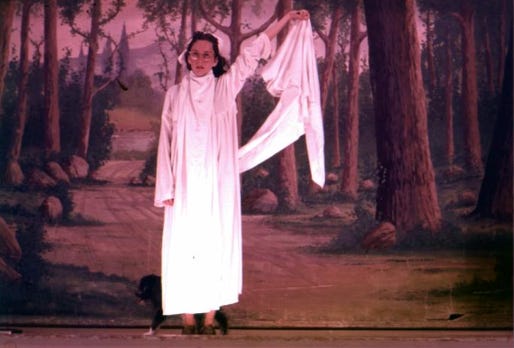
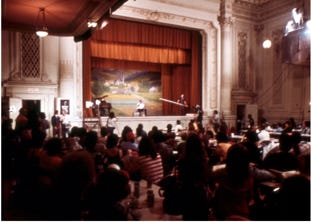

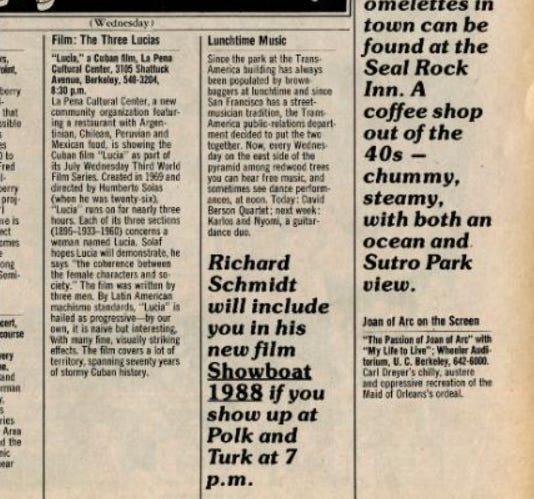


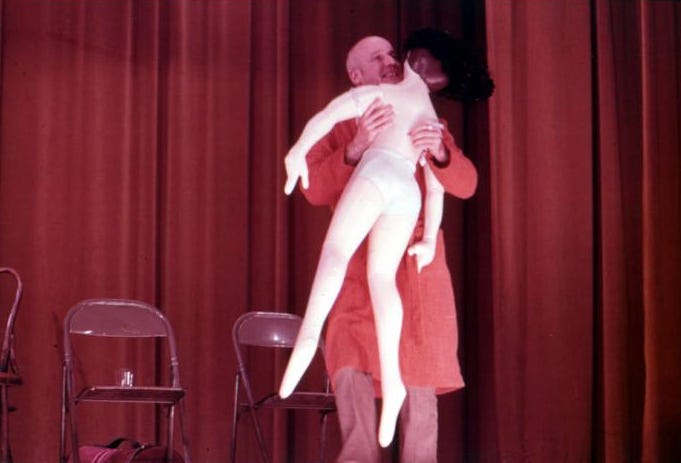
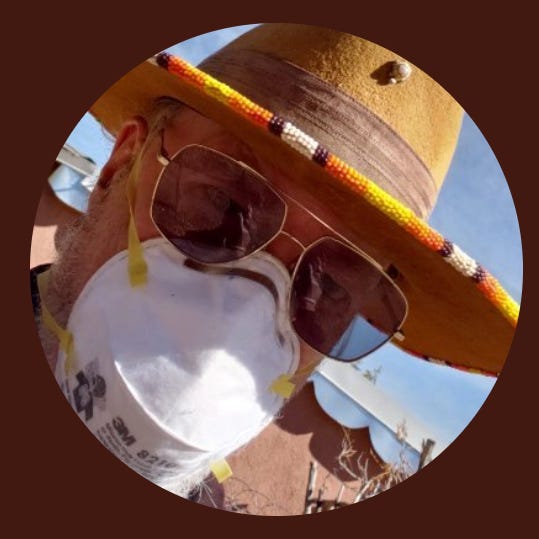
Reading this last piece is absolutely surreal. Your wild idea to film those wild auditions for a wild show leading to a session with the SNL cast! Loren Michaels! Andy Kaufman! And the finale where you absolutely win over the guy who is sputtering over your $7,000 debt by simply insisting the only way out is to finish what you started: It's hard to imagine a more extravagant, exhilirating example of the power of BELIEF, of FAITH in oneself and those "Higher Powers." Stunning